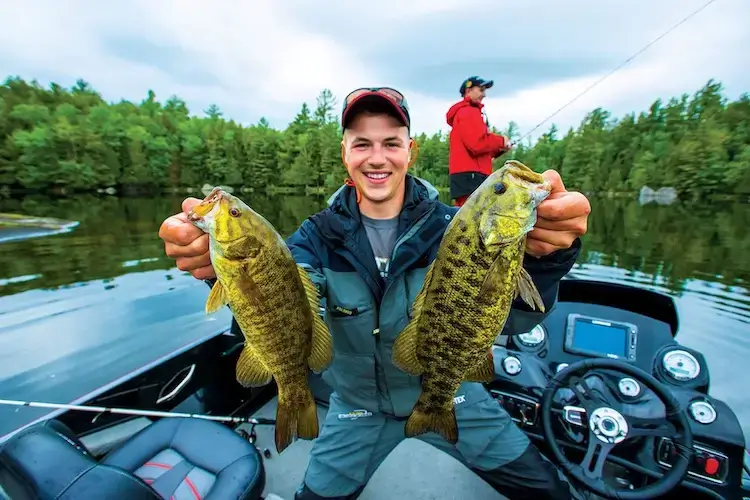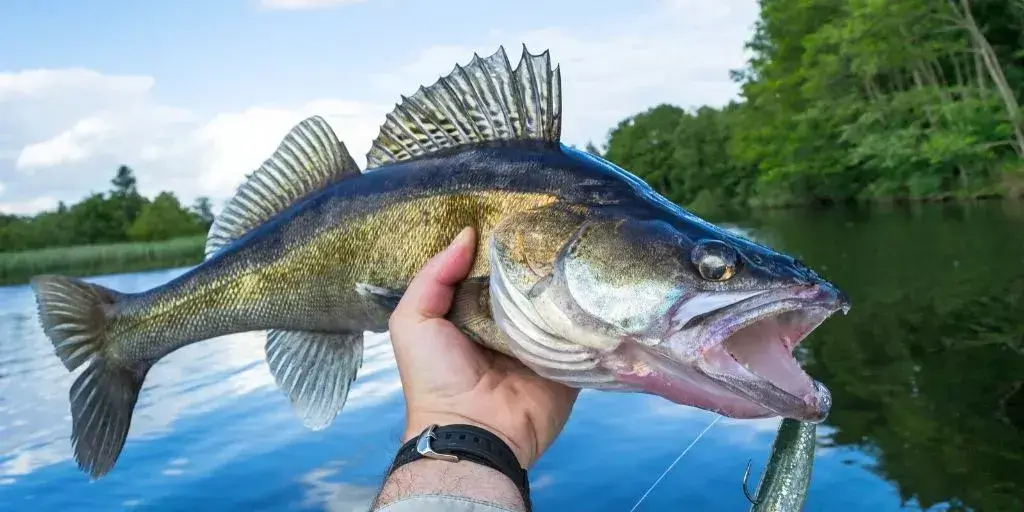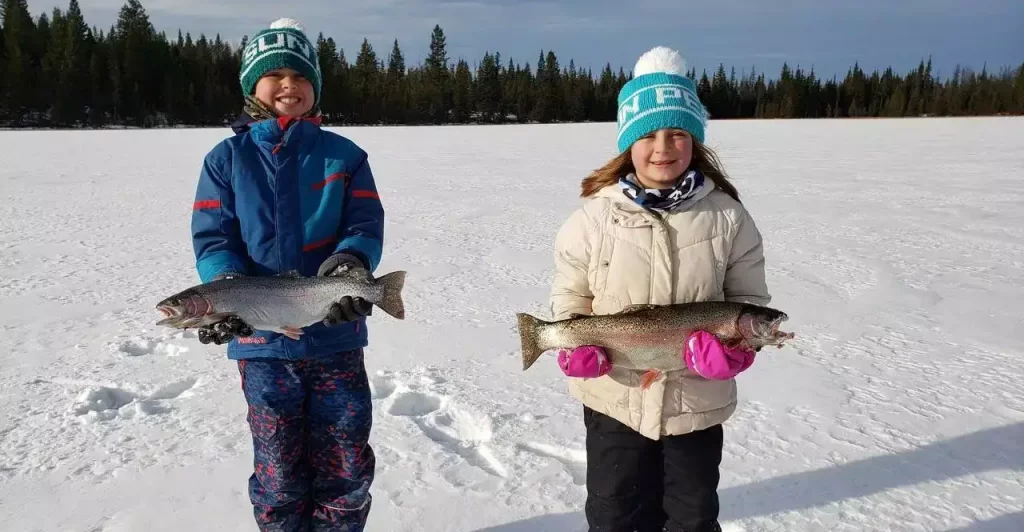There’s nothing quite like the thrill of fishing. Whether you’re a seasoned pro or a complete beginner, the excitement of reeling in a big one is unmatched. But how many fish can you realistically expect to catch in a day?
In this blog post, we’ll give you the ultimate guide to how many fish can you catch in a day. We’ll also provide some tips on how to increase your chances of landing that big one. So read on and get ready to start reeling them in.
What Factors Influence How Many Fish You Can Catch in a Day?

A few key factors will influence how many fish you can catch in a day. The first is the type of fishing you’re doing.
For example, if you’re fly-fishing for trout, you’ll likely catch fewer fish than if you were using bait for fishing for bass.
The time of year is also important. For example, the bass is known for biting more at certain times of the year than others, so if you’re fishing in a lake with lots of them, then it’ll be easier to catch them during those prime months.
The weather and water temperature can also impact how many fish you might catch on any given day. For example, if there’s heavy rain, the water will be colder and fewer fish may bite.
The type of bait you’re using can also make a big difference in how many bites you get. If it’s not appealing to them, they won’t even bother trying.
Some people prefer live worms as their go-to bait because they know how much fish like them.
How Many Fish Can You Catch in a Day?
The answer to this question depends on how much time you have to spend fishing and the types of fish in the area where you’re fishing.
In general, though, most people can catch a few fish per hour to around 20 fish. But, of course, if you’re targeting larger fish, then you’ll likely catch fewer fish per hour.
If you’re fishing from a boat, how many fish you can catch in a day will also depend on how far away the best fishing spots are.
If they are located at the end of the lake or river, and it takes you 15 minutes to get there, then you won’t be able to spend as much time catching those larger fish.
But if the best fishing spots are located near your launch point, and you can get there in just a few minutes by boat, then you will likely be higher because you’ll spend more time fishing those great areas.
What Are Some Tips to Increase Your Chances of Catching a Fish?
Now that we know what factors influence how many fish you can catch let’s look at some tips on how to increase your chances of landing that big one.
The first thing to remember is the time of year and the type of fishing you’re doing. So, for example, if you’re fly fishing in the summertime, it will be easier than if you were ice fishing during the winter months.
The type of bait is also important when trying to land a fish – some are more likely to bite on live worms than others, so make sure that what attracts them most before using something else instead.
However, the most important thing to keep in mind is how patient you are as a fisherman. If you’re constantly moving around and not giving the fish a chance to bite, then you’ll likely miss out on some opportunities.
Try to find a spot where the fish are likely to be and stay there for a while until they do.
What Type of Fishing Gear Do You Need?
- Rod and reel
- Tacklebox
- Fishing net
- Bait
- Sunglasses
- Sunscreen
- Hat
- Water bottle
- Life jacket (if you’re fishing in a boat)
If you’re fishing from the shore, you’ll also need:
- Chair
- Ice chest (to keep your catch fresh)
- Fishing license and permits (if required in your area)
- Shoes that can get wet
If you’re fishing in a boat, you’ll also need:
- Boat
- Motor (if the boat doesn’t have one)
- Gas for the motor
- Life jacket
- Anchor and rope
- Tacklebox
- Cooler to store your catch in
- Sunscreen
- Hat
- Sunglasses
- Water bottle
What Type of Bait Should You Use?
Many types of bait can be used for fishing, but the most common is probably worms. Other good baits include:
- Minnows
- Crickets
- Grasshoppers
- Ants
- Cheese
How Do You Cast Your Line?

There are many different ways to cast your line, but the most common is probably the overhead cast.
To do this, hold the rod and reel in your right hand, and extend your arm straight out from your shoulder.
Point the rod at the target, and hold the bait against the spool of line on the reel. When ready to cast, quickly pull back on the rod and release it forward. The momentum will carry the bait to the target.
When you get a bite, the key is to keep tension on the line at all times. If you let go of it or relax your grip, then you’ll lose the fish.
Which Types of Fishing Rods Are Best for Catching Multiple Fish?
The fishing rod is not just a piece of equipment, but it can make or break your fishing experience. But, of course, the type of fishing rod you choose depends on the kind of fish you plan to catch.
If you don’t know what kind of fish are available in your area, then try asking around from other anglers who have been to the location before. If you do know, then take note of the following factors when choosing a fishing rod:
- Type of fish that are available in your area (e.g., salmon vs. trout).
- Size and weight range for each species (e.g., smaller than three pounds or larger than five pounds).
- The type of water you will be fishing in (e.g., fresh or saltwater).
There are three main types of fishing rods: baitcasting, spinning, and fly rods.
Baitcasting rods are good for larger fish that weigh more than five pounds. The advantage of using a baitcasting rod is that it provides more power when casting, which means you can cast further away from shore or over obstacles such as rocks and logs.
Spinning rods are best for catching smaller fish that weigh less than three pounds. The advantage of using a spinning rod is that it allows you to slowly reel in your line without losing any momentum during the process, allowing for better control over how fast you want the bait to be moving.
Fly rods are best for catching flying fish such as trout and salmon. The advantage of using a fly rod is that they can reach longer distances than any other type of fishing rod, making them perfect when trying to cast over obstacles or in areas where there isn’t much room between you and your target area (e.g., shallow waters).
What Type of Fish Can You Catch in a Day?
There are many different types of fish that can be caught in a day. For example, you might catch salmon or trout on your fishing trip. You may also catch catfish and other bottom-feeding species.
It all depends on where you are and what kind of fish there are in the area.
If you are lucky enough to be in a location where there is plenty of fish, then it’s possible that some people could catch hundreds or even thousands of pounds worth each day.
Of course, this would require many people working together at once. Moreover, it might take several trips over several months before such an event happens again, so don’t count your chickens before they hatch.
Remember that if you do catch something big like this, it may not be worth keeping because it will spoil quickly and become unusable for food.
If you plan to eat what you catch, try catching smaller fish instead of releasing them back into the water after taking pictures first.
Limitation of Catching Fish in a Day by State

Different regulations and laws will determine how many fish you can catch in a day. The rules vary from state to state, but there is always the limitation of catching fish.
This section focuses on various states and their regulation regarding fishing in a day.
If you want to learn more about where you can get licenses for fishing, check out Where to Get Fishing License.
Arkansas River
In Arkansas state, you can catch up to a maximum of five fish in a day from the river. Although there are no limits for recreational fishermen, commercial fishing is limited by law. The minimum size for most species is about 12 inches long and not more than 20 inches.
Lake Texoma
In Lake Texoma, Oklahoma State and Texas have different rules for catching fish daily. In Texas state, you can catch up to 100 pounds of fish per day which is about 50 pounds for each angler on the boat.
This implies that if more than two people are on board, you can catch up to 100 pounds of fish per day. For Oklahoma State, the limit is not more than 12 striped bass in a day.
Chickamauga Lake
In Chickamauga Lake, Tennessee State, there is no limitation for catching fish except for paddlefish and sturgeon, which has two fishes in a day. The daily limit for all other fish is six, and the size must be at least 12 inches in total length.
Piney River
In Piney River, Missouri State, you can catch five catfish of any size per day. There is no daily limit for smallmouth bass less than 20 inches long or largemouth bass less than 14 inches long.
Lake Michigan
When it comes to fishing in Lake Michigan, there is a limit of five fish per day with size limits applied.
The minimum size for all fish caught must be at least 12 inches long, and the daily bag limit for trout is five. Muskellunge has a 30-inch minimum size limit and a three-fish daily bag limit.
When it comes to fishing, it’s important to know the rules and regulations of the state you are in. This article provides an overview of some states’ limitations for catching fish in a day. Always make sure to check the latest regulations as they can change often.
Final Thoughts
Now you know how many fish you can catch in a day, it’s time to get out there and start fishing. Make sure to use the right bait and techniques to maximize your chances of success.
And always remember to respect the regulations in place – after all, we want to make sure that our fisheries are sustainable for future generations. Good luck, and have fun fishing.

